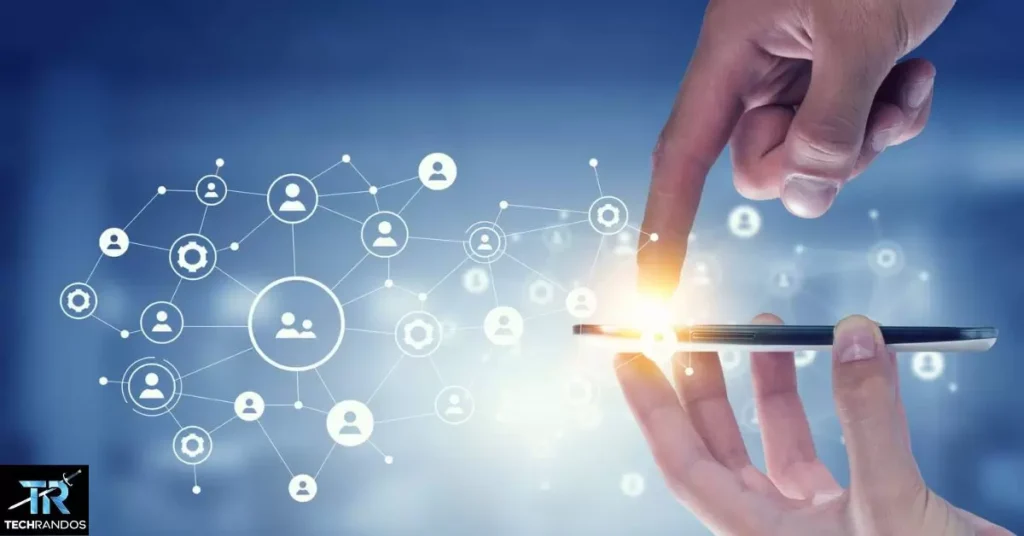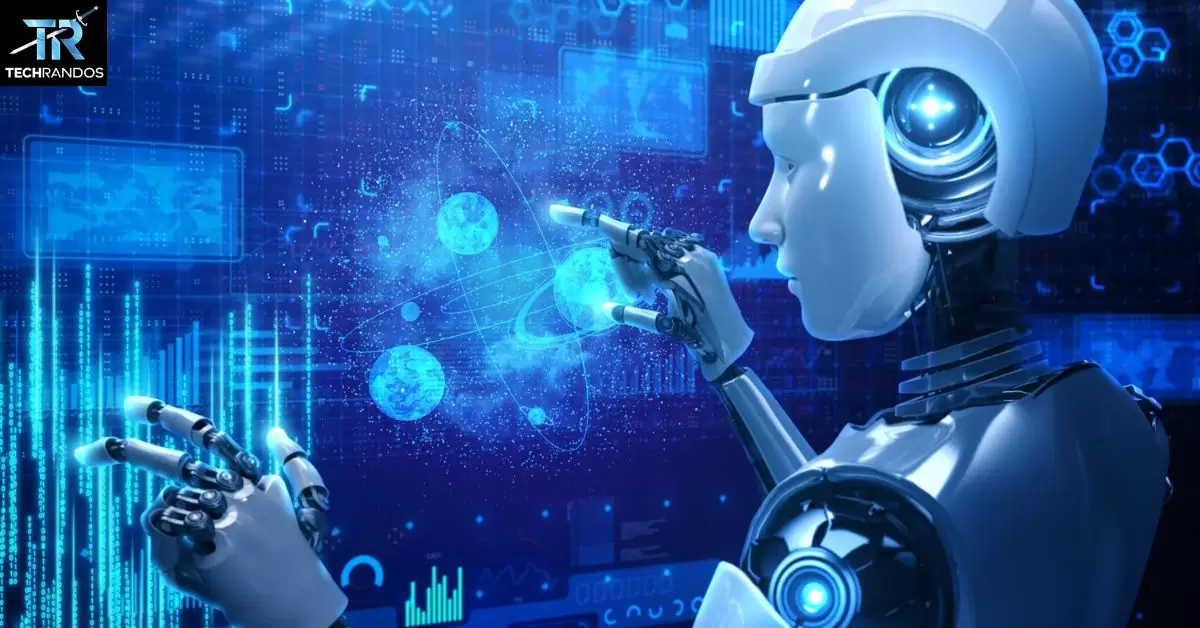In today’s rapidly evolving world, the ability to learn and adapt quickly is more crucial than ever. Enter artificial intelligence (AI) a game-changing technology that is transforming the way we approach training across various sectors. From corporate learning and development to industrial training and education, AI is revolutionizing how we acquire new skills and knowledge making the process more efficient personalized, and effective.
This article will delve into the cutting-edge applications of artificial intelligence in training exploring the benefits use cases and the future potential of this transformative technology. Get ready to embark on a journey that will open your eyes to the power of AI in shaping the future of training.
What is Artificial Intelligence in Training?
Artificial intelligence in training refers to the integration of AI technologies, such as machine learning natural language processing and cognitive computing into training programs and platforms. At its core, AI analyzes vast amounts of data to identify patterns and insights that can be used to optimize and personalize the learning experience.
AI-powered training systems can adapt to individual learning styles preferences and skill levels providing customized content and feedback in real-time. They can also automate various tasks such as grading assignments generating personalized curricula and even delivering virtual training sessions through intelligent tutoring systems or AI-powered virtual instructors.
Here are a few examples of AI-powered training tools and platforms:
- Adaptive Learning Platforms: These platforms use AI algorithms to analyze a learner’s performance and adjust the content, pace, and difficulty level accordingly ensuring a tailored and effective learning experience.
- Intelligent Tutoring Systems: AI-driven virtual tutors that can engage in natural language conversations, answer questions, provide explanations, and offer personalized feedback and guidance.
- AI-powered Learning Management Systems (LMS): AI-enhanced LMS platforms that can recommend relevant courses, track progress, and identify areas for improvement based on learner data and behavior.
By leveraging the power of AI, training programs can become more engaging, efficient, and effective helping individuals and organizations alike achieve their learning goals.
Key Advantages of Using AI for Training

The integration of AI in training offers numerous advantages that can revolutionize the way we learn and acquire new skills. Here are some of the key benefits:
- Personalized Learning Experiences: AI algorithms can analyze individual learner data, such as performance, preferences, and learning styles, to create customized curricula and learning paths tailored to each person’s unique needs.
- Real-time Feedback and Performance Tracking: AI systems can provide instant feedback and track learner progress in real-time, enabling continuous improvement and identifying areas that require additional support or reinforcement.
- Cost and Time Efficiencies: By automating various training tasks, such as content creation, grading, and virtual instruction, AI can significantly reduce the time and resources required for training, resulting in cost savings for organizations.
- Scalability: AI-powered training solutions can be easily scaled to accommodate large numbers of learners without compromising quality or personalization, making them ideal for organizations with diverse and geographically dispersed workforces.
- Immersive and Engaging Learning: AI-powered simulations, virtual reality (VR), and augmented reality (AR) environments can create highly engaging and immersive training experiences, improving knowledge retention and practical skill development.
With these advantages, AI has the potential to revolutionize the way we approach training, making it more effective, efficient, and accessible to a wider audience.
Recommended Articles: Man-made Intelligence in Production Networks: A Game-Changer
AI Training in Corporate Learning and Development
In the corporate world where continuous learning and upskilling are essential for staying competitive, AI is playing a pivotal role in transforming learning and development programs. From onboarding new employees to compliance training and professional development, AI is being leveraged to create more engaging and personalized learning experiences.
AI-powered Employee Onboarding
Effective onboarding is crucial for helping new hires quickly integrate into an organization’s culture, processes, and workflows. AI-powered onboarding platforms can streamline this process by delivering personalized training content based on an individual’s role, background, and learning preferences.
For example, an AI-driven onboarding system could analyze a new employee’s resume job description, and pre-assessment results to generate a customized curriculum covering the most relevant topics and skills. Additionally, virtual reality (VR) simulations can be used to provide immersive training experiences, allowing new hires to practice real-world scenarios in a safe controlled environment.
AI-enhanced Compliance Training
Compliance training is a critical component of many industries ensuring that employees understand and adhere to relevant regulations and policies. However, traditional compliance training can often be dry and forgettable. AI can help make compliance training more engaging and effective by incorporating interactive elements, gamification, and personalized content delivery.
For instance, an AI-powered compliance training platform could use natural language processing (NLP) to assess an employee’s understanding of a particular regulation through interactive quizzes or scenario-based exercises. Based on their responses, the AI system could then provide tailored feedback, additional resources, or adaptive learning paths to reinforce areas of weakness.
AI-driven Professional Development
In today’s rapidly changing business landscape, continuous professional development is essential for employees to stay relevant and competitive. AI can play a crucial role in identifying skill gaps, recommending relevant training opportunities, and creating personalized development plans.
AI algorithms can analyze an employee’s job role, performance data, and career aspirations to recommend targeted training courses, online learning resources, or mentorship opportunities. Additionally, AI-powered virtual coaches or intelligent tutoring systems can provide personalized guidance, feedback, and support throughout the professional development journey.
By leveraging AI in corporate learning and development, organizations can create more effective, engaging, and tailored training experiences that drive employee growth, retention, and overall business success.
Artificial Intelligence Revolutionizing Educational Training

The education sector is also experiencing a significant transformation driven by the integration of AI in training. From K-12 classrooms to higher education institutions, AI is being used to enhance learning outcomes, personalize instruction, and streamline administrative tasks related to training and education.
AI-powered Intelligent Tutoring Systems
Intelligent Tutoring Systems (ITS) are AI-driven educational platforms that provide personalized instruction and feedback to students. These systems can adapt to individual learning styles, skill levels, and knowledge gaps, offering tailored content, explanations, and exercises to help students better understand and retain information.
For example, an ITS for mathematics could use AI algorithms to analyze a student’s problem-solving approaches, identify areas of weakness or misconceptions, and provide targeted feedback and additional practice problems to reinforce concepts. These systems can also incorporate natural language processing (NLP) to enable conversational interactions, allowing students to ask questions and receive clarifications in a more natural and engaging manner.
AI-assisted Grading and Assessment
Grading and assessing student work can be a time-consuming and subjective process for educators. AI can help streamline this process by automating various grading tasks, such as scoring multiple-choice exams, analyzing written assignments for plagiarism, or providing feedback on coding assignments.
AI-powered grading systems can also provide detailed analytics and insights into student performance, helping educators identify areas where additional support or instruction may be needed. This can lead to more effective and data-driven teaching strategies, ultimately improving learning outcomes.
Personalized Learning Paths with AI
Every student learns at a different pace and has unique strengths and weaknesses. AI can help create personalized learning paths by analyzing student data, such as assessment results, engagement levels, and learning preferences.
AI algorithms can then generate customized lesson plans, recommend supplemental resources, and adjust the pace and difficulty level of the content based on each student’s needs. This personalized approach can help ensure that no student falls behind or becomes disengaged, as the learning experience is tailored to their individual requirements.
By leveraging AI in educational training, institutions can provide more effective, personalized, and engaging learning experiences, ultimately improving student outcomes and preparing them for success in an increasingly digital and technology-driven world.
AI’s Impact on Industrial and Manufacturing Training

In the industrial and manufacturing sectors, where safety, efficiency, and precision are paramount, AI is playing a crucial role in enhancing training programs to ensure workforce readiness and competency.
Immersive Training with AR/VR Simulations
One of the most significant applications of AI in industrial training is the use of augmented reality (AR) and virtual reality (VR) simulations. These immersive environments allow trainees to practice complex procedures, operate machinery, and experience real-world scenarios in a safe, controlled setting.
AI algorithms can generate realistic simulations based on actual industrial data, enabling trainees to experience a wide range of situations, including rare or high-risk scenarios. Additionally, AI can analyze trainee performance during these simulations, providing real-time feedback and identifying areas for improvement.
For example, a VR simulation for forklift operator training could recreate various warehouse environments, challenging trainees with different load types, obstacles, and emergency situations. The AI system could then assess the trainee’s decision-making, reaction times, and adherence to safety protocols, providing tailored feedback and additional training as needed.
AI-guided Repair and Maintenance Training
In complex industrial settings repairs and maintenance tasks can be intricate and time-sensitive. AI can play a crucial role in enhancing training for these critical operations, ensuring that technicians and maintenance personnel have the knowledge and skills to perform their duties effectively and safely.
One approach is the use of AI-guided repair and maintenance instructions. These systems can provide step-by-step instructions tailored to the specific equipment or machinery in question, complete with diagrams, videos, and real-time guidance based on the technician’s actions.
For example, an AI-powered system could analyze sensor data from a piece of equipment, identify the root cause of an issue, and generate a customized repair procedure for the technician. As the technician follows the instructions, the AI system can monitor their progress, offer clarifications or additional details as needed, and even provide augmented reality (AR) overlays to highlight specific components or steps.
Additionally, AI can be used to create digital twins – virtual replicas of physical assets or processes. These digital twins can be used for training simulations, allowing technicians to practice maintenance tasks in a risk-free environment before working on the actual equipment.
By leveraging AI in industrial and manufacturing training, organizations can improve workforce safety, reduce equipment downtime, and enhance overall operational efficiency through better-trained and better-prepared personnel.
Challenges and Limitations of AI in Training

While the potential benefits of AI in training are significant, it’s important to acknowledge and address the challenges and limitations associated with this technology:
- Data Quality and Bias Concerns: AI systems are only as good as the data they are trained on. If the training data is incomplete, biased, or of poor quality, the AI models may exhibit biases or make inaccurate predictions, leading to suboptimal training experiences.
- The Need for Human Oversight and Emotional Intelligence: While AI can automate and optimize various aspects of training, it may struggle to replicate the human touch and emotional intelligence required for certain aspects of learning, such as interpersonal skills, leadership development, or creative problem-solving.
- Ethical Considerations: The use of AI in training raises ethical concerns around privacy, data security, and the potential for AI systems to perpetuate or amplify existing biases or discriminatory practices.
- Technological Limitations: Current AI technologies still have limitations in areas such as natural language understanding, context awareness, and common sense reasoning, which may impact the effectiveness of AI-powered training solutions in certain scenarios.
To address these challenges, it’s crucial for organizations to adopt a responsible and ethical approach to AI implementation in training. This includes:
- Ensuring data quality and diversity to prevent biases
- Maintaining human oversight and involvement in the training process
- Implementing robust data privacy and security measures
- Continuously monitoring and auditing AI systems for potential biases or ethical issues
- Investing in ongoing research and development to advance AI capabilities
By proactively addressing these challenges, organizations can leverage the power of AI in training while mitigating potential risks and limitations.
Frequently Asked Questions
How does AI enhance personalized learning?
AI algorithms can analyze individual learner data, such as performance, preferences, and learning styles, to create customized curricula and learning paths tailored to each person’s unique needs. This personalized approach ensures more effective and engaging training experiences.
What are some real-world examples of AI in corporate training?
AI is being used in corporate settings for employee onboarding personalized curricula, VR simulations, compliance training interactive scenarios, gamification, and professional development skill gap analysis virtual coaching, personalized development plans).
How is AI transforming educational training?
In education, AI is powering intelligent tutoring systems personalized instruction and feedback, automated grading and assessment plagiarism detection coding analysis and personalized learning paths customized lesson plans and content based on student data.
What role does AI play in industrial and manufacturing training?
AI is enhancing industrial training through immersive AR/VR simulations practicing complex procedures and scenarios, AI-guided repair and maintenance instructions step-by-step guidance augmented reality overlays and digital twin simulations virtual replicas for risk-free training.
What are the potential challenges or limitations of AI in training?
Key challenges include data quality and bias concerns, the need for human oversight and emotional intelligence, ethical considerations around privacy and AI decision-making, and technological limitations in areas like natural language understanding and common sense reasoning.
What skills or expertise will be needed to effectively integrate AI in training programs?
Successful AI integration in training will require skills and expertise in data analysis, machine learning, software development instructional design and change management as well as a deep understanding of the organization’s training needs and goals.
How can organizations get started with AI in training?
Organizations can start by identifying specific training challenges or opportunities where AI could add value, conducting a thorough assessment of their data and infrastructure readiness, and partnering with AI experts or vendors to pilot AI-powered training solutions before scaling up.
Conclusion
The integration of artificial intelligence in training is not just a fleeting trend but a transformative force that is reshaping the way we acquire knowledge and develop new skills. From corporate learning and development to educational institutions and industrial settings, AI is revolutionizing training programs, making them more personalized, engaging, and effective.
By leveraging AI technologies such as machine learning, natural language processing, and immersive simulations, training can be tailored to individual needs, providing real-time feedback, adaptive learning paths, and immersive experiences that enhance knowledge retention and practical skill development.
However, it’s important to recognize that AI is not a panacea; it presents its own set of challenges and limitations that must be addressed responsibly. Organizations must prioritize data quality, ethical considerations, and human oversight to ensure that AI-powered training solutions are effective, unbiased, and aligned with their values and goals.
As AI continues to evolve and mature, its applications in training will only become more sophisticated and impactful. Organizations that embrace this technology early and integrate it strategically into their training programs will gain a significant competitive advantage in developing a skilled, adaptable, and future-ready workforce.











